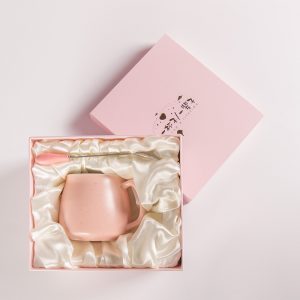When companies order gift box packaging, they often encounter some difficulties in the new version of the proofing and printing process. The professional flexible packaging printing Hongfeng Printing Factory summarizes the more common problems reflected in the new version of the proofing and printing process, and hopes to be able to order gift box packaging. Business helps.
Gift Package
1. The graphics and text of the printing plate do not match the original
This is a situation that everyone does not want to see. It is not good for the plate maker, printing house and customers, but there is no good way to do this, only rework. Therefore, when Hongfeng Printing Plant places an order for plate making, it will definitely explain the final basis of the job size and text content, especially when the customer provides more information, such as existing color drafts, or copies, faxes, etc. At this time, we will strictly review whether the contents of the various materials are consistent, whether there are conflicts, and communicate with customers in a timely manner, rather than taking it for granted.
2. Hue deviation
Because of the application of digital proofing system, the plate making factory will usually make a digital proof for the packaging printing plant and the customer to confirm before making the plate, and the effect of the digital proof is also close to the actual gravure effect. The printing process control of the packaging factory is relatively stable, there is not much fluctuation, and there should not be too obvious hue deviation. For some large packaging manufacturers, this is not a problem, and some small packaging manufacturers are not doing well in this regard, and may often encounter this problem.
Gift Package
3. The layout is easy to be dirty
This is related to the quality of the chrome-plated layer. Generally speaking, the chrome-plated layer must meet a certain brightness and density requirements. Generally, the surface of the chrome layer must be controlled at 400-600 lines/cm2, and the layout is within this range. Not easy to get dirty. But even a particularly dense chrome layer, if it is rough and not bright enough, it will easily become dirty. Improper control of the printing process may also cause the layout to be dirty. You can try to adjust the printing pressure, ink viscosity and solvent ratio, replace the ink, adjust the squeegee and other methods to solve it.
4. Knife line
From the perspective of plate making, there are two reasons for cutting lines, one is scratches on the copper-plated surface, and the other is the low hardness of the chrome layer or the rough surface. From the perspective of printing process control, the reasons may include: foreign matter in the ink, scratching the layout; poor sharpness and flatness of the squeegee; improper angle and pressure of the squeegee.
5. Low printing endurance of the printing plate
From the perspective of the plate maker, this is mainly related to the hardness of the chrome layer. Generally speaking, the hardness of the chrome layer should be controlled between HV900-1000. The hardness of the chrome layer is low, which of course affects the service life of the printing plate, but If the hardness of the chromium layer is too high, the internal stress is relatively large, and the chromium layer is prone to burst (also called “burst plate”), which will also affect the printing endurance of the printing plate. Of course, the low printing endurance of the printing plate may also be related to the printing process of the gift box packaging manufacturer, such as excessive printing pressure, improper squeegee angle and pressure, foreign matter in the ink, or improper use by the operator.
Gift Package
6. Inaccurate overprinting
From the perspective of the plate cylinder, the main reasons are as follows: the diameter of the plate cylinder is problematic; the dynamic balance of the plate cylinder cannot meet the requirements, and there is a big jump during the printing process. From the perspective of printing, the main reasons are: material expansion and deformation; improper oven temperature setting; improper tension control or fluctuations.
















